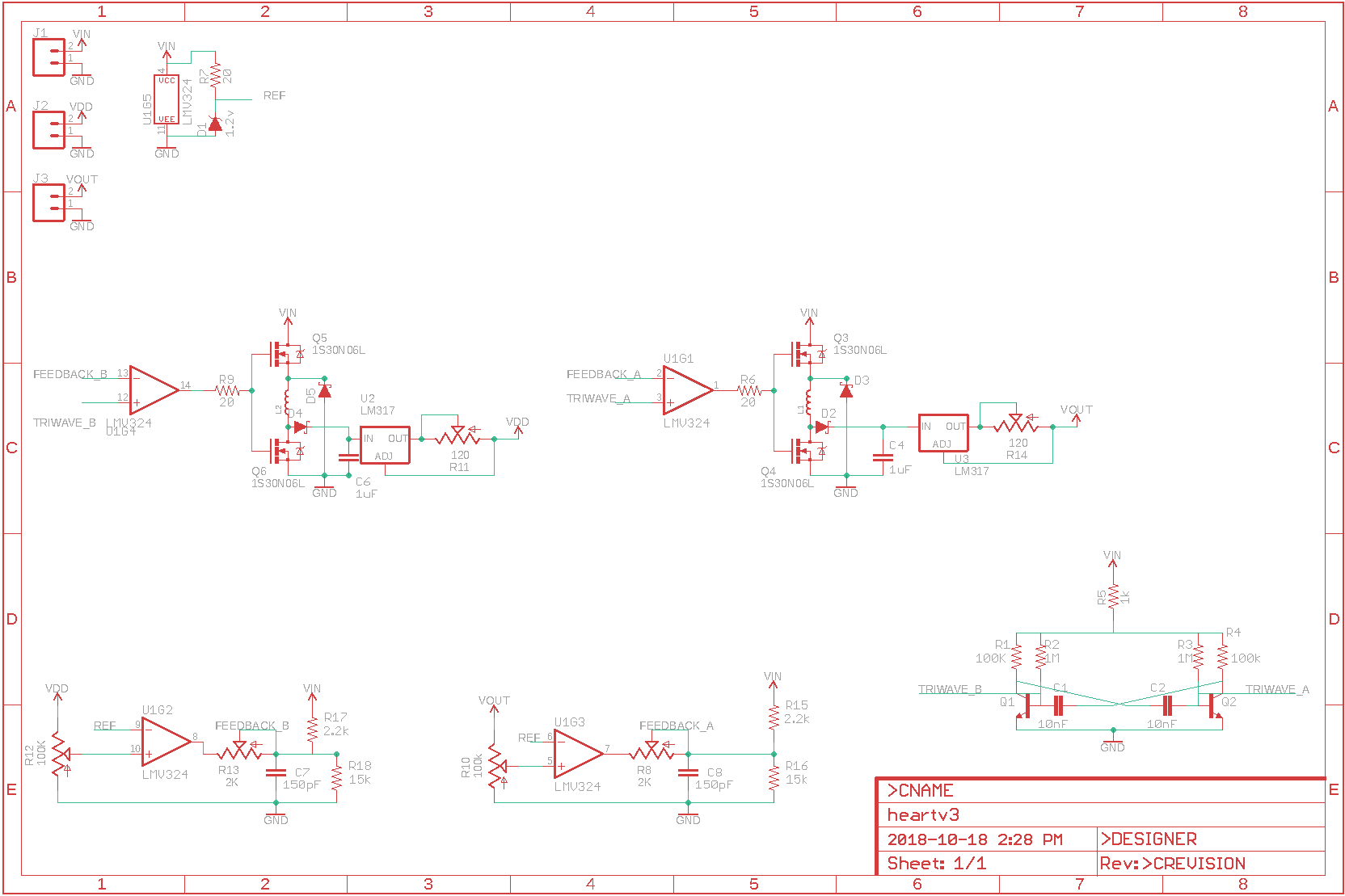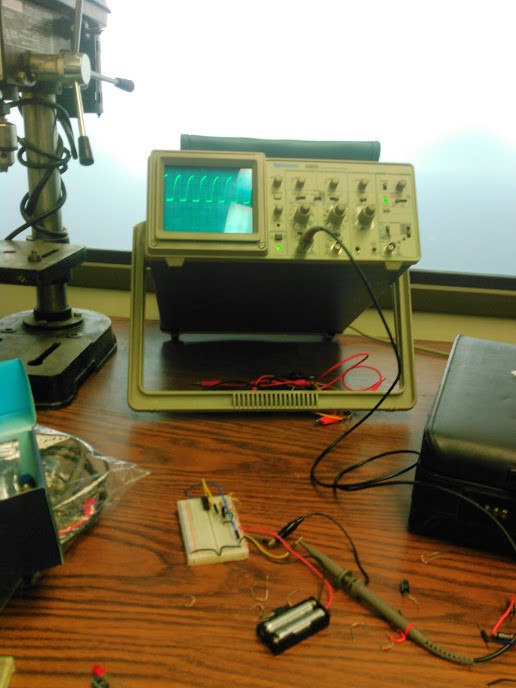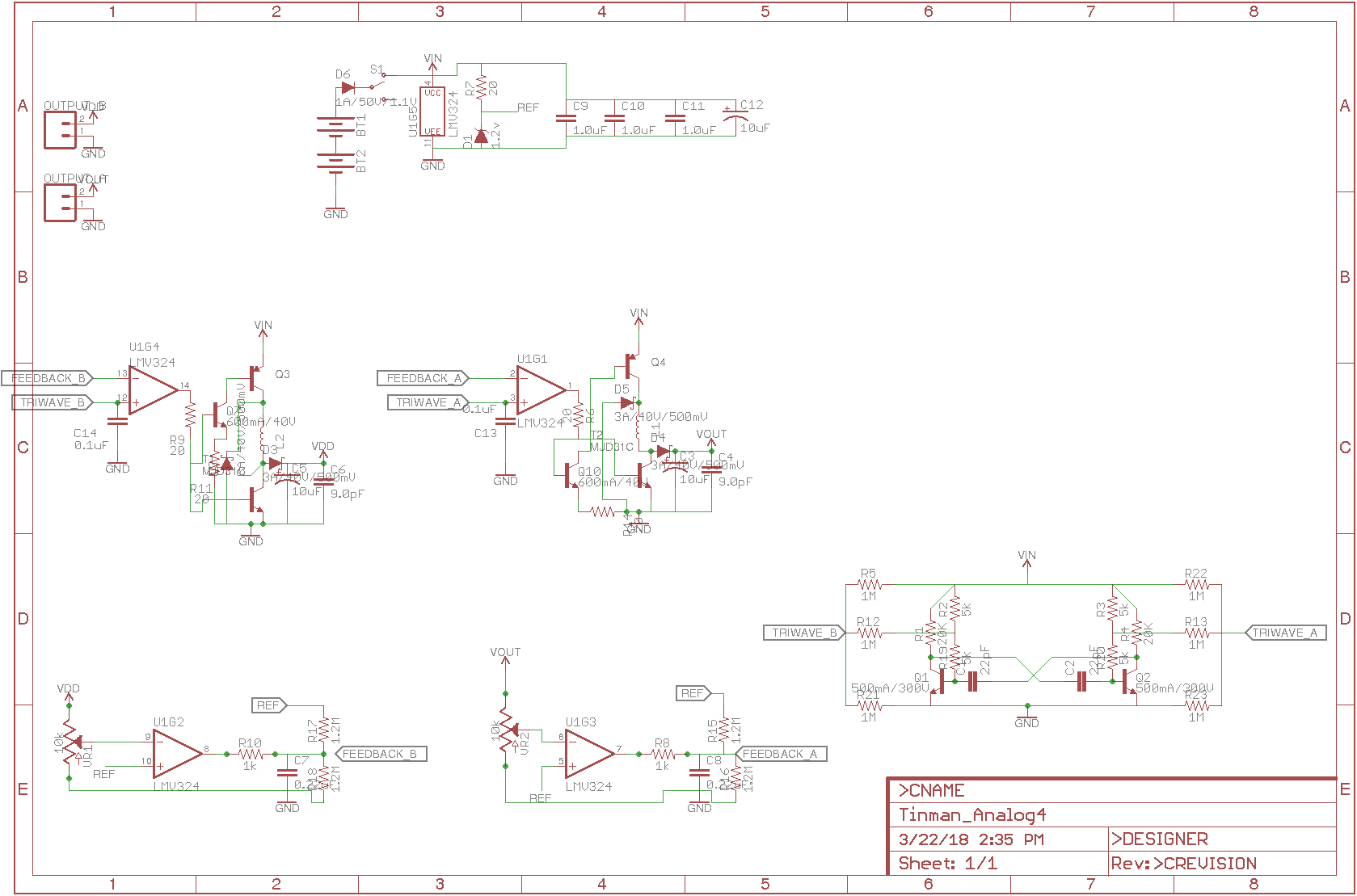-
Aaaand we're back
10/18/2018 at 20:31 • 0 commentsMore life happened, more things got in the way, but I've been making slow progress. Here's the latest version of the electric heart, with component values that actually work.
![]()
Still to come, tested versions of an automatic boost/buck/boost-buck selection system, PCB layouts, and an automated readout system.
-
No plan survives first contact with life
04/07/2018 at 00:55 • 0 commentsSo obviously I didn't post more build logs like I was planning. Being a caretaker for a chronically ill spouse means sometimes having to give up your plans to handle some of the bizarre things that life throws at you, so I wound up stuck at home for a long time doing a great deal of hard work, and by the time I was free, I was so tired that I didn't have the energy to do anything besides play Skyrim for a couple hours and then flop face-first into bed. Happily, bashing Draugr into submission seems to have recharged me a little bit.
So, onto the build log.
I forgot when I was typing up the build instructions that the resistors attached to the bases of the two BJT's in the oscillator need to be at least one order of magnitude higher than the resistors attached to the bases -- so when I went to reassemble the circuit as I had designed it, it wouldn't oscillate, and I spent an hour banging my head in frustration before I realized my mistake.
![]()
But realize it I did, and I got the oscillator back up and running, as you can see... just in time to discover that my brand new IRF510 MOSFET is toast (don't trust Radio Shack, kids). So I'm still down one working model, but hopefully I'll have a fully functional prototype to demo in my next build log. So here I am, typing my build log at the laundromat -- hopefully I'll have more to report soon.
Side note: I'm still going back and forth with myself on whether I want to continue to use the triangle waves from the transistor bases or rectify the square wave output into a triangle wave -- the latter would change in the same proportion as the voltage divider in the feedback input should the input voltage change, but it would require more components and more math to operate, whereas the former would be far easier to use but might do some weird things if the input voltage changes too much.
-
Whoops, forgot to post this
03/22/2018 at 20:37 • 0 commentsAlmost forgot, here's the most recent revision of the circuit design I'm using (ignore the resistor/capacitor values, they aren't accurate right now, math corrections to come soon)
-
*tap tap tap* This thing on?
03/22/2018 at 20:26 • 0 commentsSo as you may have guessed by this project's feed entry, I didn't just start work today on it, but since I managed to get four days off in a row from work I'm declaring the next few days to be my own personal mini-hackathon for this power supply project, which will hopefully end in me completing the documentation for this project, finishing the design equations, and being able to reliably produce this power supply in whatever number is necesary.
Where I am so far:
I have already built this circuit a few times and verified that it does reliably produce a steady current at the desired voltage (highest it's gone is 67v) and is reasonably tolerant of load changes (so far I just tested it with a potentiometer and a 555 attached to a dummy load MOSFET). Because of a recent move, the assembled circuit wound up being bounced around in a briefcase for several weeks and now needs to be reassembled.
What I hope to accomplish this weekend:
I desperately need a bench power supply (or five) for other projects, so I'm hoping to get one assembled, tested, and working that can output two selectable voltages with variable current control and read out said voltages/currents on an LCD panel. I also hope to finish adapting this into a fully parametric design so that others can build this power supply from scratch without needing to bash their heads against several pages of calculus like I did.
What the future holds:
I'm hoping to adapt this system into something that I can sell on Tindie, and also planning on adapting it for power-harversting purposes like MPPT controllers for solar panels and charge/speed controllers for wind turbines.
Electric Heart
A dual analog SMPS using components that the average maker is likely to have lying around
 Jakob Wulfkind
Jakob Wulfkind

